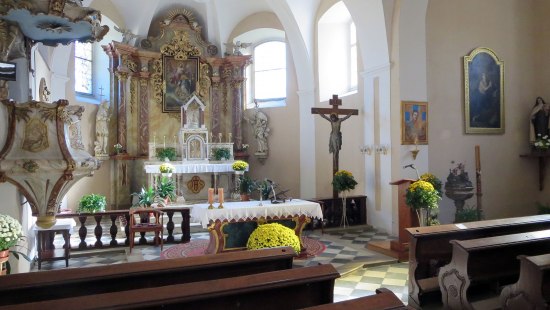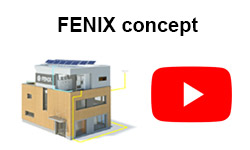Heating of church pews in the Church of St. Gotthard

The church pews in the Church of St. Gotthard have already been fitted with electric heating once in the past. However, this system stopped being satisfactory not only from the point of view of operating parameters but also from the safety aspect.
Therefore, reconstruction work was prepared for the end of 2013 and the beginning of 2014 during which the heating elements, electrical system and the wiring box of this system were to be exchanged. In the original project it was proposed that FRICO HS 250 heating panels intended for installation under the seats of church pews should be used.
With regards to the price as well as the long delivery time for the FRICO panels, FENIX Jeseník was approached by a representative of the investor with a question as to whether it, as a Czech producer, could offer a suitable alternative. Their first suggestion was that their proven ECOSUN K panels could be used, as they are actually intended for the heating of church pews. A detailed article about the testing of these panels 'on-site' in the Church of St. Gotthard, and their comparison with the FRICO HS panels suggested for the project, can be found here.
Even though the ECOSUN K+ panels had significantly more advantageous operating parameters, the means by which they were attached (always on the rear part of the back support of the preceding pew) was shown to be unsuitable here. The space between the individual pews was relatively narrow, and it would get even smaller after installation of the panels. Therefore, it was necessary to return to the original proposal – i.e. the installation of panels under the seats of the pews.
ECOSUN K+ panels themselves are unsuitable for such placement – because the radiant flow would then not be aimed at the persons present but at the floor, their temperature would be insufficient. Moreover, the width of the panels would be approximately 2 cm greater than the width of the seats. Therefore, FENIX suggested the use of ECOSUN TH high temperature panels, which are normally intended as terrace heaters for the zonal heating of conservatories, roofed terraces, etc. The wattage of these panels is 1000 and 1500 W, which was a lot for the intended use. The wattage of the panels was thus reduced to 500 W and another comparison test with a FRICO HS panel was performed after agreement with the investor.
During the test, not only the surface temperatures of both panels, the warming of the benches themselves and the warming of the floor under the benches were tested, but also and mainly the subjective perception of temperature comfort was evaluated. In the infrared camera pictures, the evenly-spread heating of the ECOSUN TH panel is clearly visible, as is also the higher surface temperature thanks to which the radiation is more distinct. This difference is caused not only by the higher wattage of the ECOSUN heating panels, but also by their different construction.
In the following infrared camera pictures, the warming of the floor is measured – the first picture shows the highest floor temperature reached under the ECOSUN panel (38°C) and under the FRICO panel (21.4°C); the second picture shows the average temperature of the relevant part of the floor which is subject to radiation from the ECOSUN panel (30°C). Subjective evaluation showed that the wattage of the ECOSUN panel can be decreased further (400W), after which it can still attain better parameters than in the case of FRICO HS panels.
On the basis of these tests, the investor chose the suggested ECOSUN TH 400W panels for the heating of the pews – a total of 82 pieces were installed. The panels are divided into several sections and thus the heating of the pews can be switched on gradually, depending on the number of visitors. At the time of writing, the panels have had one month of test operation in the Church of St. Gotthard (December/January). This was evaluated as being highly satisfactory by a representative of the investor.
Users responded positively not only to the excellent thermal comfort but also to the appearance of the panels, which blend in with the dark wood of the church pews due to their matt black surface which renders them practically unnoticeable to the casual viewer. As a result, they do not disturb the overall appearance and atmosphere of this spiritual place.















